Ulumbarra Theater - Bendigo, Australia
Artistic freedom instead of a penitentiary system
The Ulumbarra Theater in Bendigo, Australia was formerly a prison
The lighting designers for the Ulumbarra Theater aimed for understated luminaires instead of bulky, expressive solitary units. The specification criteria were objective design, good quality of light and on-site level of integration.
»"It's always a challenge to convert a heritage site into a place for contemporary use, and especially if a prison becomes a theatre," said Matt Dwyer, the director of Y2 Architecture. His offices successfully implemented the metamorphosis. Despite the extensive modernisation methods the history of the building remains tangible.
This has been achieved on the one hand by maintaining the existing room structures. The contours of the old prison chapel for example can still be clearly recognised and the main entrance of the building is via an old block of cells. On the other hand the surfaces in many areas have been conserved in their original state. Flaking paint, signs of use and naked brickwork attest to the long, rough history of the building. These relics are supplemented by a modern hybrid of materials consisting mainly of exposed concrete, timber and matt white surfaces. Red carpets here and there also set minor dramatic accents highly suitable for a theatre location
»A theatre and event centre was always at the very top of our wish list," explained Dale Pearce, Director of Bendigo Senior Secondary College (BSSC) in Greater Bendigo, Australia. This hope was recently fulfilled in a more or less unexpected way – the former Sandhurst Pentonville prison, a building from 1860, was fundamentally redesigned and now accommodates a 1,000-seat theatre and a range of studios for dance, music and drama.
One of the main beneficiaries of the Ulumbarra Theater will be the BSSC with its extensive teaching courses in the area of dramatic arts, while other schools and universities can also host their graduation ceremonies, meetings and conferences. Bendigo's residents also benefit from the bold investment – the city has around 20 dance ensembles, a dozen theatre groups, a symphony orchestra and many bands, forming a lively artistic scene that will fill the former prison with new life.
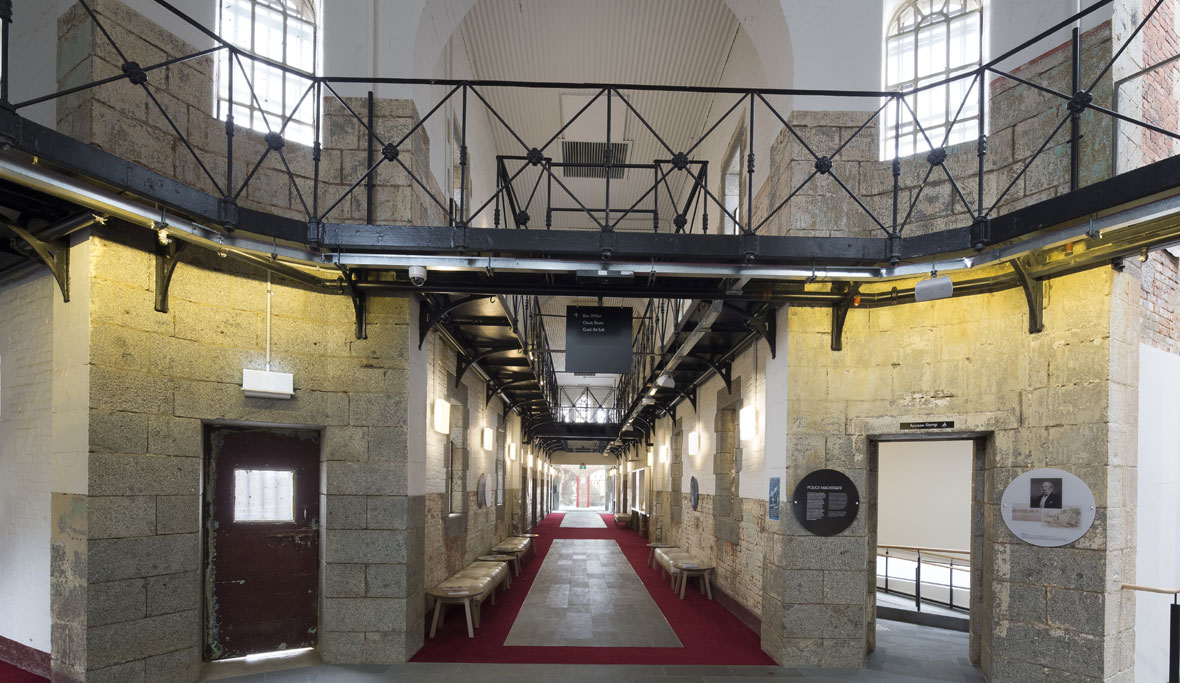
The reconstruction of the theatre was only possible thanks to financial support from the state and federal government as well as district authorities, and various donations and sponsor subsidies were needed to implement the project and ensure its continuance.
Efficient building operation in this regard is essential, which is why the lighting designers took a good look at energy efficiency.
Luminaires used are equipped mainly with LED light sources but also with fluorescent lamps, and a DALI light control system enables dimming and switching of predefined luminaire groups according to requirements.
The same effect is achieved in a further foyer where SOLVAN ceiling-recessed luminaires supplement AMATRIS downlights. Here as well only the light emission surface and not the housing can be seen. As filigree lines of light they highlight the subzones of the foyer which often serves as a cafeteria during performance breaks.
The applications are exemplary for the concept of the lighting design, continued elsewhere with further luminaire types. INPERLA downlights brighten the access zones to the large hall and ENTERIO light panels are integrated flush into the ceilings of the washrooms, reminiscent of artists' dressing rooms. Linear MONTIGO surface-mounted wall luminaires emit functional light.
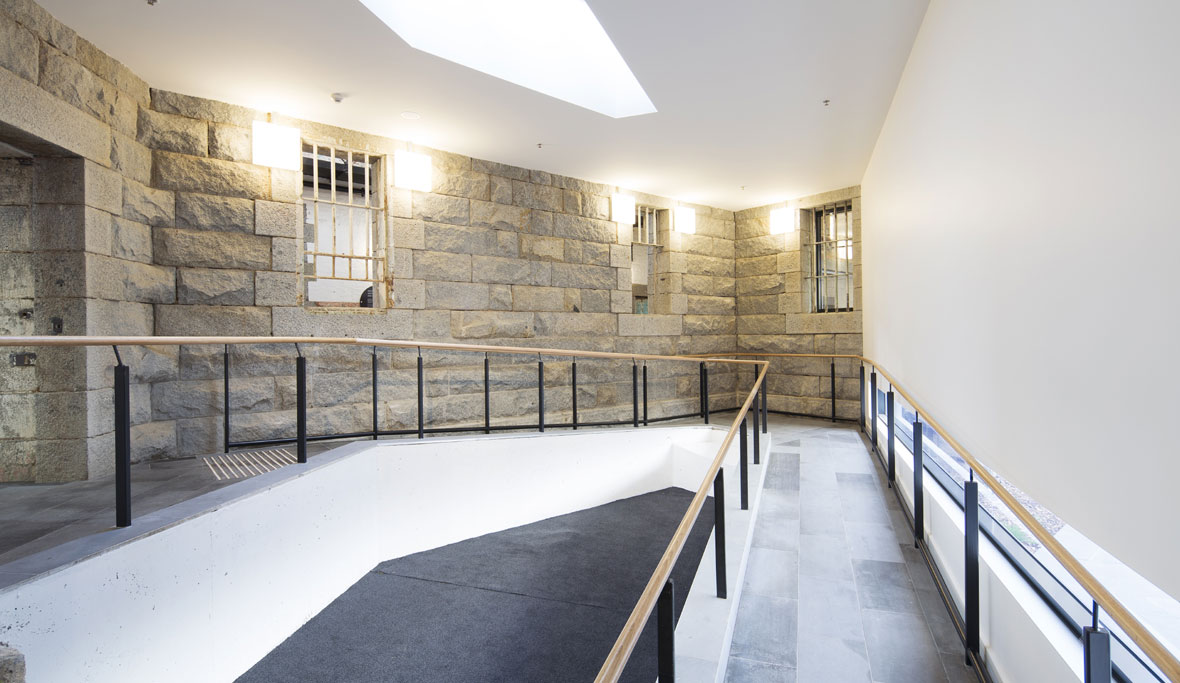
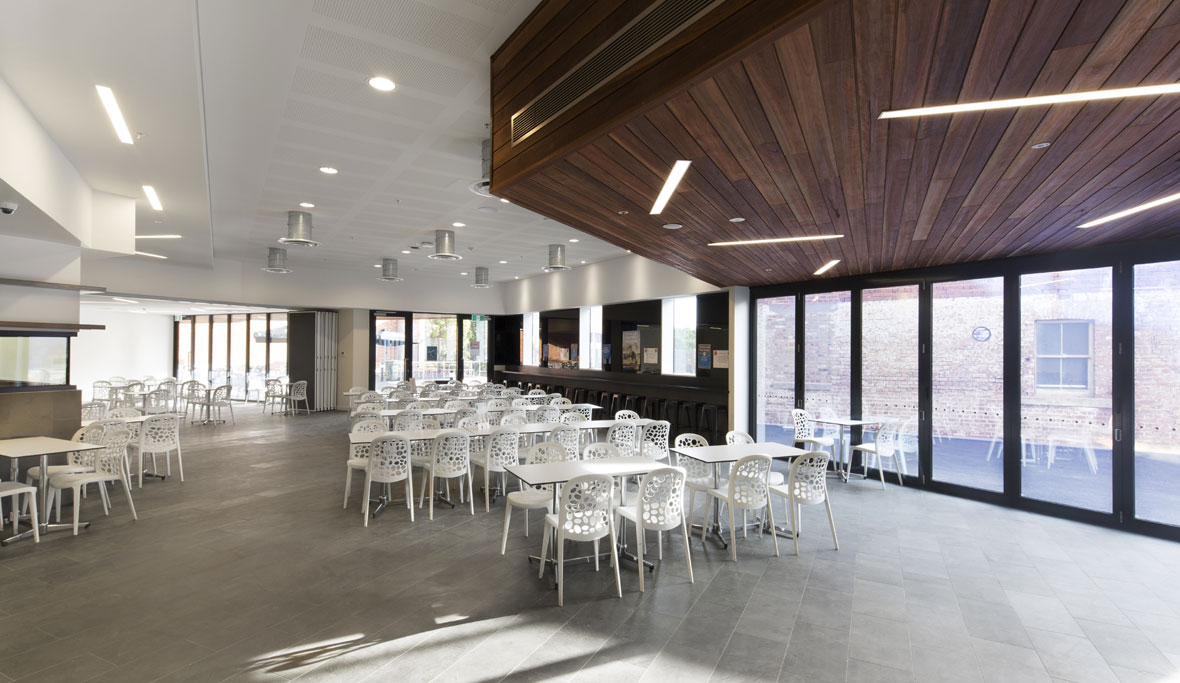
The designers have in this way successfully united the historical substance of the building with a range of contemporary reconstructions and additions. The original, profane character of the building and its current artistic use were reconciled with skill, with the contrast between the two not being whitewashed over but used to enrich the setting.
Because the individual public areas of the theatre already feature a high level of character with own texture and colour palettes the lighting was not conceived as an additive medium for design. The luminaires blend harmoniously into the context and support the atmospheric, functional intentions of the interior design. The designers aimed for an objective language of design and good integration into the building structure instead of expressive, bulky single units. The lighting designers from ADP Consulting:Engineering specified products selected from the TRILUX portfolio for the wide variety of lighting tasks at the Ulumbarra Theater.
Square DECA wall luminaires for example were installed in high quantities, illuminating the linear corridors in the building and exploiting their innate advantage of low construction height and glare-free light distribution in the frequently narrow, low corridors. Light from the DECA is emitted to the front through the white diffuser while an indirect component brightens the wall surface around the luminaire. This gives the corridors a bright and friendly appearance.
The large theatre foyer benefits from seamless luminaire integration into the architecture. Round AMATRIS recessed downlights were installed in the foyer's white ceiling.
The luminaires themselves with their white reflectors and purist, white cover rings blend into the background, giving precedence to the light itself. The wide room dimensions are brilliantly and attractively illuminated.
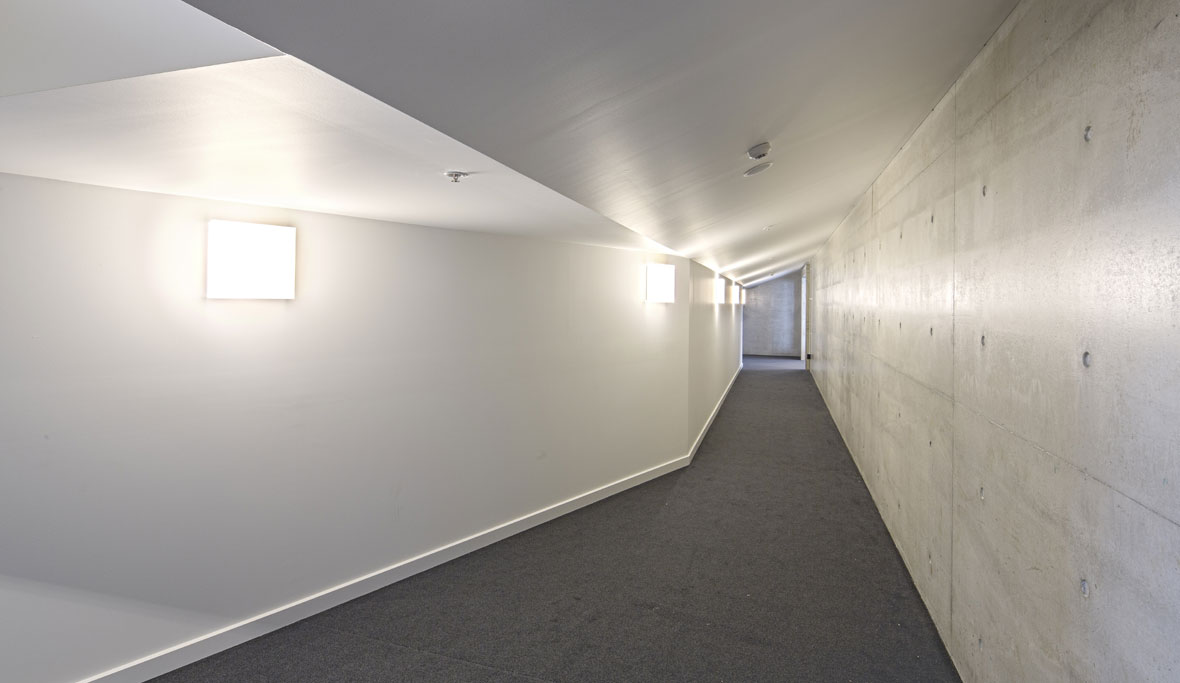
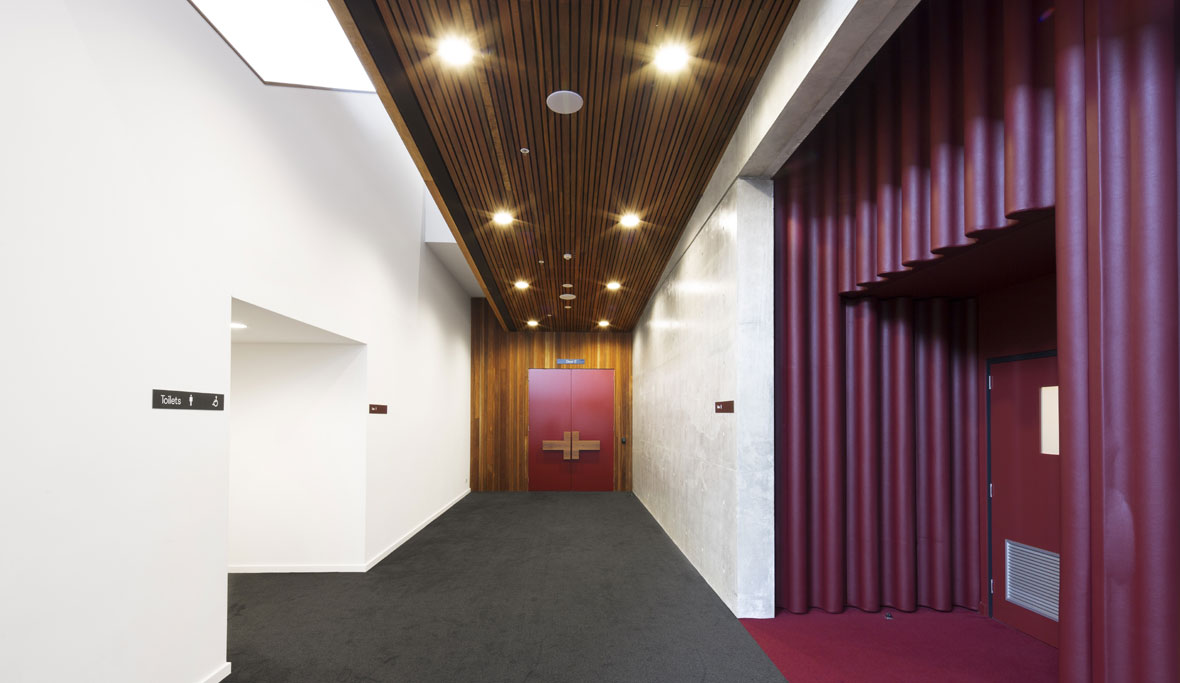
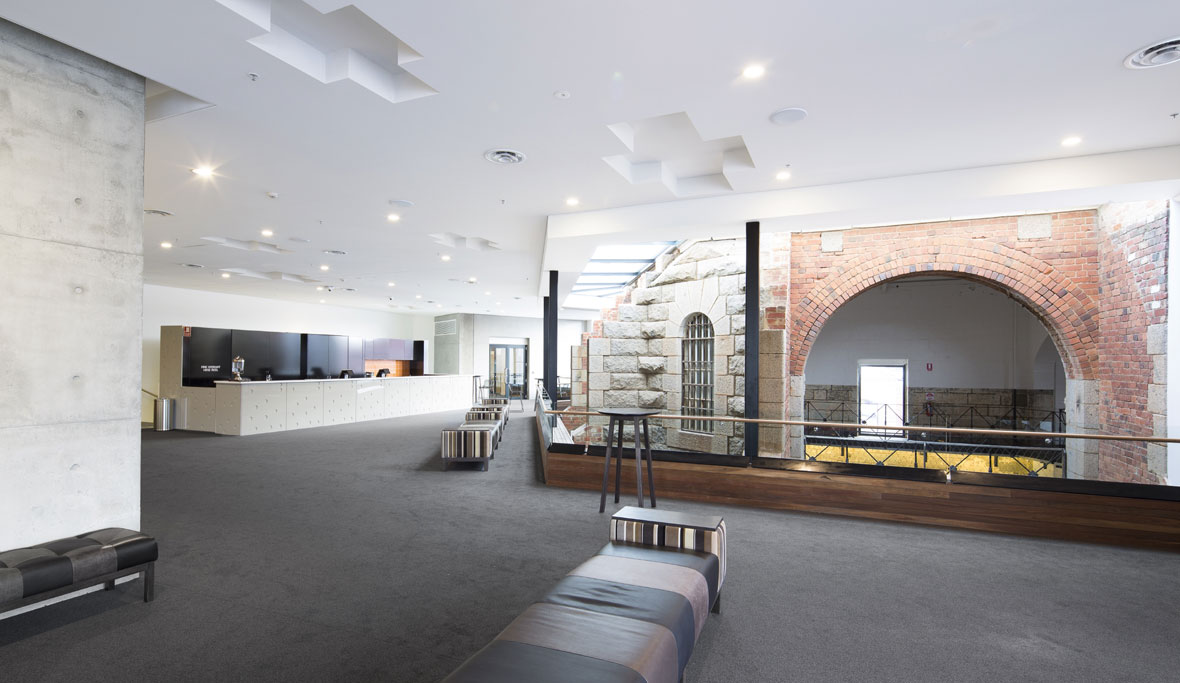
Project participants
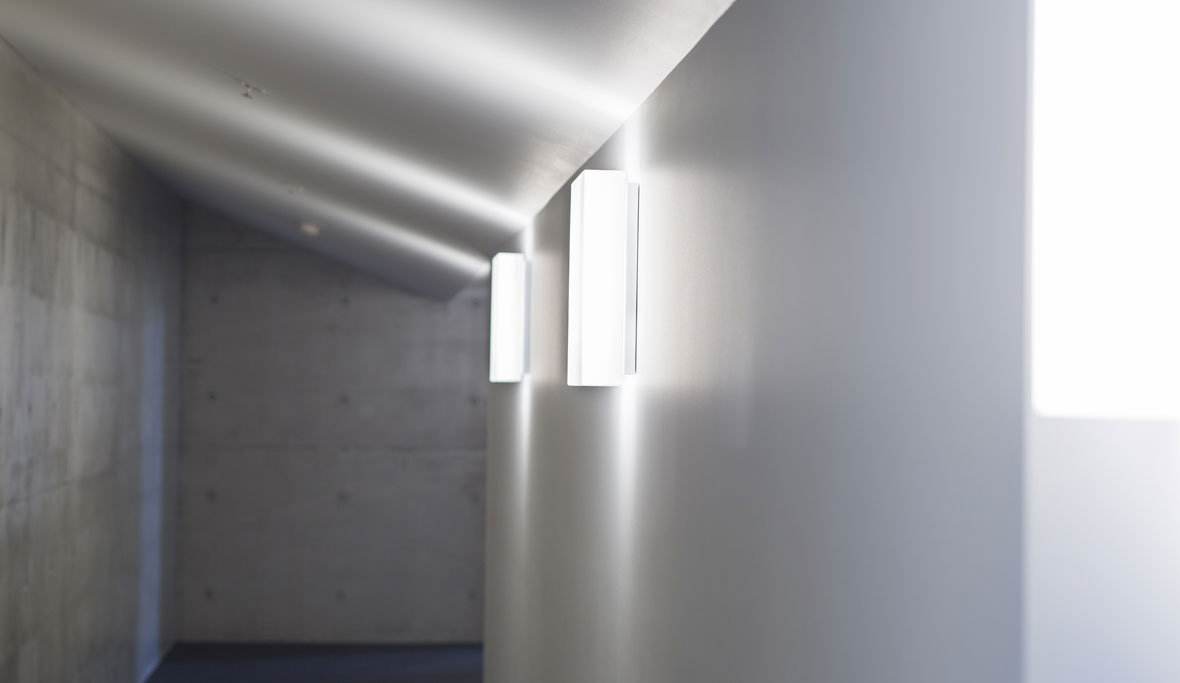
- Architects
Y2 Architecture, Prahran/Victoria - Lighting design
ADP Consulting:Engineering, Sydney/Melbourn - TRILUX distributor
Light Culture Australia, Somersby Buckford Illumination Group, Melbourne